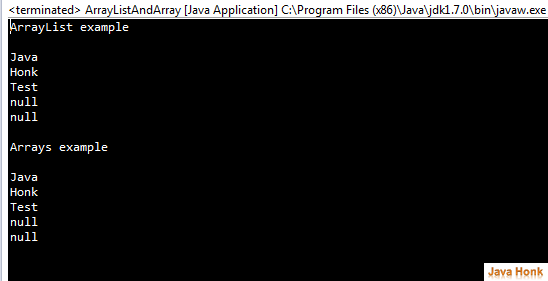Advantages of ArrayList over Arrays
Answer: Below are points:
| ArrayList | Arrays |
| ArrayList is dynamically grows list if internal array out of space then its size increases by double | Arrays is fixed size list and it cannot be modified once created |
| Previous to Java version 5 storing primitives type was not allowed only object storage was allowed in ArrayList. After introducing Auto-boxing with Java 5 which allows us to store primitive type which get converted to Objects. | On the other hand Arrays can store both Objects and primitive types |
| ArrayList generics are allowed so that one that one can find what kind of object ArrayList going to store. | Use of generics is not allowed in Arrays because Arrays initialize with its type of object it’s going to store. |
| To get the length you will have to call size method | To get the length you will have to call length |
| There is an overhead related to managing the size of the internal array and more if you try to access its element using casting object | This overhead not there in Arrays because initially you define it. |
| ArrayList is dynamically allocated elements | Whereas Arrays is statically allocated elements |
Below is example java class:
package com.javahonk.arraylistvector; import java.util.ArrayList; import java.util.List; public class ArrayListAndArray { public static void main(String[] args) { System.out.println("ArrayList example\n"); List<String> list = new ArrayList<String>(); list.add("Java"); list.add("Honk"); list.add("Test"); list.add(null); list.add(null); for (String string : list) { System.out.println(string); } System.out.println("\nArrays example\n"); String arrays[] = new String[5]; arrays[0] = "Java"; arrays[1] = "Honk"; arrays[2] = "Test"; arrays[3] = null; arrays[4] = null; for (int i = 0; i < arrays.length; i++) { String string = arrays[i]; System.out.println(string); } } }
That’s it Advantages of ArrayList over Arrays

